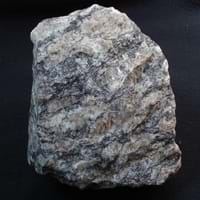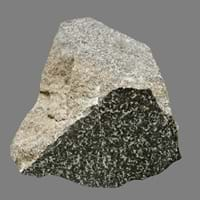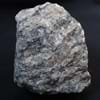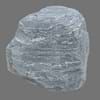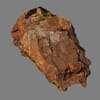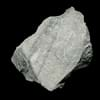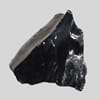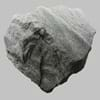Definition
Gneiss is a common and widely distributed type of rock formed by high-grade regional metamorphic processes from pre-existing formations that were originally either igneous or sedimentary rocks
Diabase is a fine-grained igneous rock which is composed mostly of pyroxene and feldspar
Discoverer
Unknown
Christian Leopold von Buch
Etymology
From the Middle High German verb gneist (to spark; so called because the rock glitters)
From Greek di + base
Class
Metamorphic Rocks
Igneous Rocks
Sub-Class
Durable Rock, Hard Rock
Durable Rock, Hard Rock
Group
Not Applicable
Volcanic
Other Categories
Coarse Grained Rock, Medium Grained Rock, Opaque Rock
Fine Grained Rock, Medium Grained Rock, Opaque Rock
Texture
Banded, Foliated, Platy
Aphanitic, Granular
Color
Black, Brown, Pink, Red, White
Dark Grey to Black
Durability
Durable
Durable
Scratch Resistant
Yes
Yes
Appearance
Foliated
Vesicular
Interior Uses
Countertops, Decorative Aggregates, Flooring, Interior Decoration
Countertops, Decorative Aggregates, Homes, Interior Decoration, Kitchens
Exterior Uses
As Building Stone, As Facing Stone, Garden Decoration, Paving Stone
As Building Stone, As Facing Stone, Paving Stone, Garden Decoration, Office Buildings
Other Architectural Uses
Curbing
Curbing
Construction Industry
As Dimension Stone
As Dimension Stone, Building houses or walls, Cement Manufacture, Construction Aggregate, for Road Aggregate
Medical Industry
Not Yet Used
Not Yet Used
Antiquity Uses
Artifacts
Artifacts, Monuments, Sculpture, Small Figurines
Commercial Uses
Cemetery Markers, Jewelry, Tombstones, Used in aquariums
An Oil and Gas Reservoir, Cemetery Markers, Commemorative Tablets, Laboratory bench tops, Jewelry, Sea Defence, Tombstones
Types
Augen Gneiss, Henderson Gneiss, Lewisian Gneiss, Archean and Proterozoic Gneiss.
Not Available
Features
Generally rough to touch, Is one of the oldest rock
Smooth to touch
Archaeological Significance
Famous Monuments
Konark Sun Temple in India, Washington Monument, US
Stonehenge in English county of Wiltshire
Sculpture
Not Yet Used
Used
Famous Sculptures
Not Applicable
Data Not Available
Pictographs
Not Used
Not Used
Petroglyphs
Not Used
Not Used
Figurines
Not Yet Used
Used
Formation
Gneiss is a high grade metamorphic rock i.e. it has been subjected to higher temperatures and pressures than schist. It is formed by the metamorphosis of Gneiss forms from volcanic rock, shale or granitie.
Diabase forms when molten igneous rock is squeezed up into a vertical crack in other rocks, the crack is usually forced apart and the molten rock cools in the space to form a tabular igneous intrusion cutting across the surrounding rocks and is known as a dike.
Mineral Content
Biotite, Chlorite, Feldspar, Garnet, Graphite, Hornblade, Micas, Muscovite or Illite, Quartz, Quartzite, Silica, Zircon
Augite, Chlorite, Olivine, Plagioclase, Pyroxene, Pyrrhotite, Serpentine
Compound Content
Aluminium Oxide, NaCl, CaO, Iron(III) Oxide, FeO, Potassium Oxide, Magnesium Carbonate, MgO, MnO, Phosphorus Pentoxide, Silicon Dioxide, Titanium Dioxide
Aluminium Oxide, CaO, Chromium(III) Oxide, Iron(III) Oxide, Potassium Oxide, MgO, Sodium Oxide, Silicon Dioxide, Sulfur Trioxide
Types of Metamorphism
Impact Metamorphism
Burial Metamorphism, Cataclastic Metamorphism, Contact Metamorphism, Regional Metamorphism
Types of Weathering
Biological Weathering, Mechanical Weathering
Biological Weathering, Chemical Weathering
Types of Erosion
Chemical Erosion, Coastal Erosion, Sea Erosion
Chemical Erosion, Coastal Erosion, Water Erosion
Grain Size
Medium to Coarse Grained
Fine to Medium Grained
Fracture
Irregular
Conchoidal
Porosity
Very Less Porous
Highly Porous
Luster
Dull
Not Available
Cleavage
Poor
Not Available
Specific Gravity
2.5-2.7
2.86-2.87
Transparency
Translucent to Opaque
Opaque
Density
2.6-2.9 g/cm3
2.7-3.3 g/cm3
Resistance
Heat Resistant, Pressure Resistant, Scratch Resistant, Wear Resistant
Heat Resistant, Impact Resistant, Pressure Resistant, Wear Resistant
Deposits in Eastern Continents
Asia
China, India, Iran, Iraq, Kazakhstan, Kyrgyzstan, Mongolia, Russia
India
Africa
Cameroon, Ethiopia, Ghana, Kenya, Madagascar, Morocco, Mozambique, Namibia, Nigeria, Tanzania, Togo
South Africa, Tanzania
Europe
Albania, Austria, Bosnia and Herzegovina, Finland, France, Georgia, Germany, Hungary, Italy, Kosovo, Monaco, Norway, Poland, Romania, Serbia, Slovakia, Slovenia, Switzerland, Ukraine, United Kingdom
Germany, Greece, Italy, Scotland, Turkey
Others
Not Yet Found
Antarctica, Greenland
Deposits in Western Continents
North America
Canada, Costa Rica, Cuba, Mexico, Panama, USA
Canada, USA
South America
Argentina, Bolivia, Brazil, Chile, Colombia, Ecuador, Peru, Venezuela
Argentina, Brazil, Colombia, Venezuela
Deposits in Oceania Continent
Australia
New South Wales, New Zealand, Queensland, Victoria
Central Australia, New Zealand, Queensland, Western Australia
